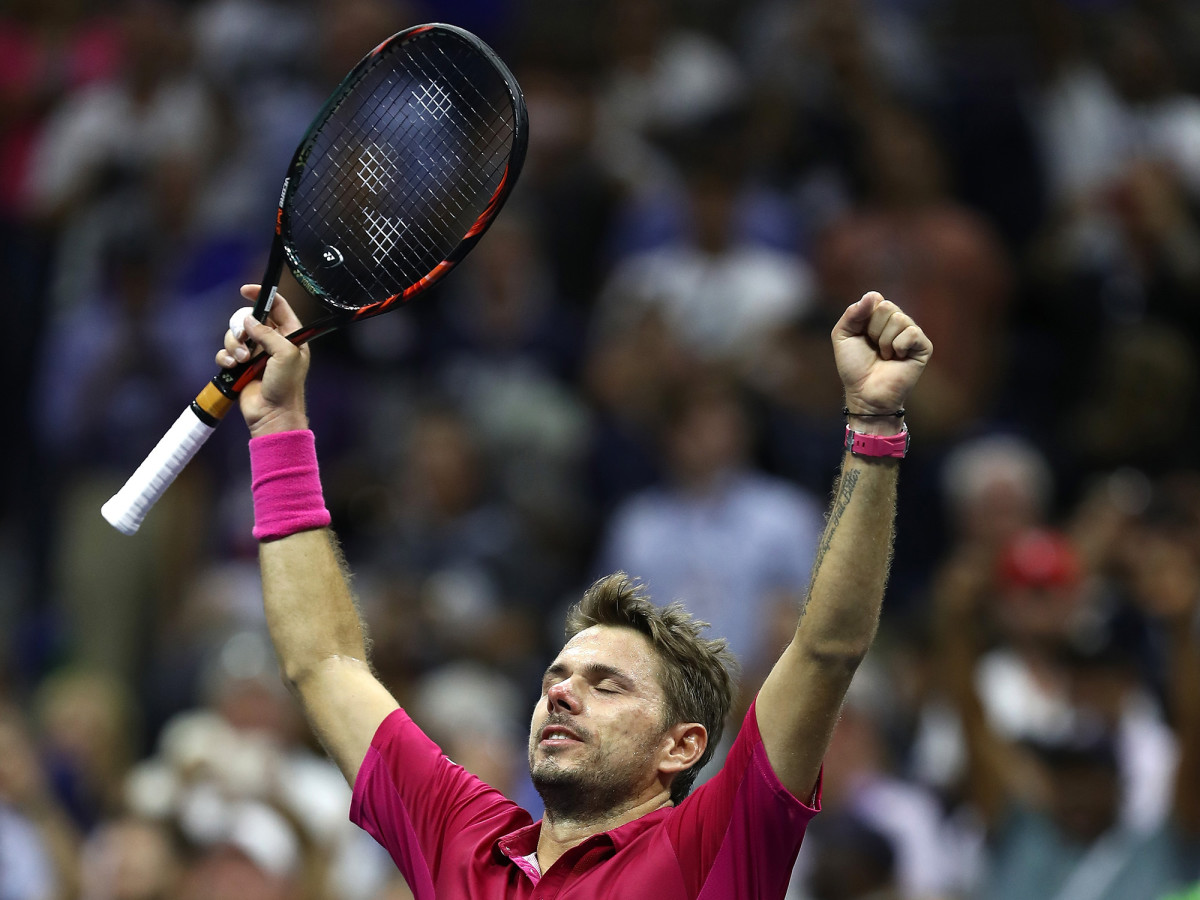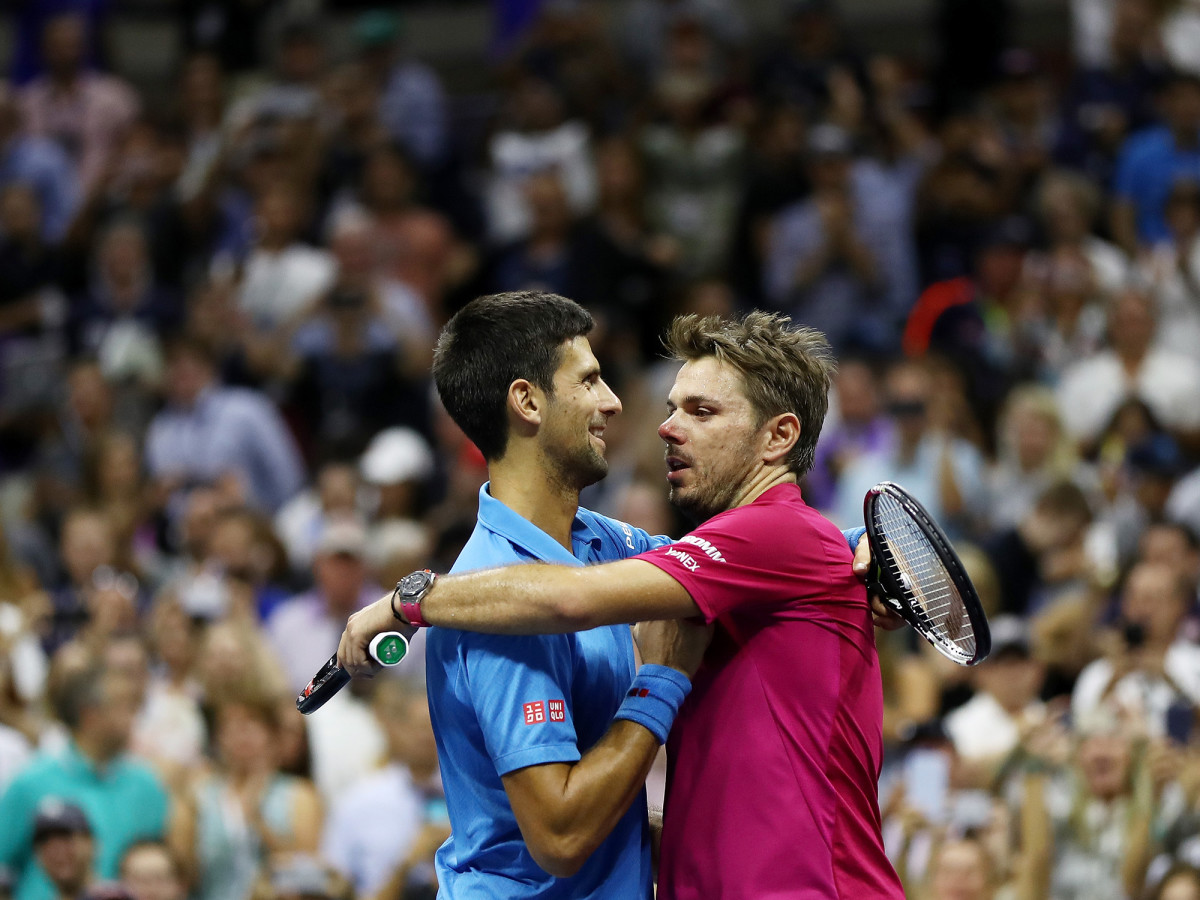Wawrinka may never be part of tennis's exclusive quartet, but that's OK with him

NEW YORK – A few minutes before the 2016 U.S. Open final, Stan Wawrinka was crying in the locker room.
He was nervous. Shaking. He had played the Biggest Match of His Life before, but here he was again, in a Grand Slam final—his first at the U.S. Open—up against Novak Djokovic, the No. 1 player in the world. As Wawrinka later recounted, he was in tears as he spoke to his coach, Magnus Norman, before taking the court.
Four hours later, Wawrinka again became emotional. This time, under much different circumstances: He had just beaten Djokovic 6–7(1), 6-4, 7-5, 6-3 to win the third Grand Slam title of his career.
“Honestly, after the match I was completely empty,” Wawrinka said. “I put everything on the court. Not only today, but the past two weeks.”

Wawrinka’s run to the final included a saved match point against British journeyman Daniel Evans, a quarterfinals win over Juan Martin del Potro and a semifinal triumph over No. 6-seed KeiNishikori. On Sunday, he faced Djokovic—the player who, for the last two years, has brought out Wawrinka’s brilliance. Like his famous win over Djokovic at Roland Garros in 2015, Wawrinka dropped the first set before surging to a four-set victory.
Djokovic said after the match that Wawrinka played “more courageous” than him in the final. It’s true: Not many players can face down the most dominant player in the world and repeatedly put him on the defensive. But Wawrinka has now beaten Djokovic in two Grand Slam finals and one quarterfinal in the last three years. On Sunday, Wawrinka’s courage showed when, after an unsteady start—he racked up eight unforced errors and just one winner in the first two games alone—the Swiss No. 3 seed rallied and forced a tiebreaker in the first set. Though Djokovic ultimately won the tiebreaker, the World No. 1’s momentum had slowed. His courage showed again when he rebounded to break Djokovic early in the second set, and then again when he came back from a 0-40 deficit at 3–1 in the second set to keep his advantage. Then in the first game of the third set, Wawrinka served his way back from a 15-40 deficit and held serve after three deuces. And then, of course, there was the tall order of closing out Djokovic in the fourth set.
50 parting thoughts from the 2016 U.S. Open
Djokovic missed numerous opportunities: He was just three of 17 on break point chances. But Wawrinka played dynamic, fearless tennis, and disrupted Djokovic’s rhythm starting in the second set. It was vintage Stan, the man who seems to save his best tennis for Grand Slam finals.
“He stepped in and played aggressive, where I was kind of more waiting for things to happen,” Djokovic said.
The final was a reminder that very few men provide better tennis and on-court drama in Grand Slams than Djokovic and Wawrinka. It was also a reminder that, despite Djokovic’s lopsided 19–5 record against Wawrinka over his career, no player challenges Djokovic at this moment quite like Wawrinka. In six Grand Slam meetings since the start of 2013, Wawrinka has four wins. The other two went five sets. And there have been some absolute classics: The 2015 French Open final (Wawrinka in four sets), the 2014 Australian Open quarterfinals (Wawrinka in five sets), the 2013 Australian Open fourth round (Djokovic in five sets).
But this rivalry is often disregarded, inevitably because of the Big Four. For nearly a decade, men’s tennis has been dominated by an exclusive quartet: Roger Federer, Rafael Nadal, Andy Murray and Djokovic. Since the 2005 French Open, every Grand Slam final save for one has included at least one of these four men. After Sunday, does Wawrinka belong in that group?
It’s hard to say what exactly unites the Big Four. If current dominance is the most important factor, then Nadal and Federer are clearly a step below Djokovic and Murray. If it’s Grand Slam titles, then Murray (three over his career) doesn’t belong with Federer (17), Nadal (14) or Djokovic (12).
Wawrinka’s career achievements are hard to gauge. He’s won three Grand Slams, but only one Masters 1000 event. In comparison, Murray has won three Slams but also 12 Masters 1000 titles. Wawrinka has never lost a Grand Slam final, an incredible achievement that implicitly acknowledges that he’s only appeared in three.

Said Djokovic after Sunday’s match: “He deserves to be in the mix, no doubt about it. Stan won three Grand Slams now and three different ones, Olympic medal. Been around for so many years, and he plays best in the big matches. I mean, he definitely deserves to be mentioned in the mix of top player.”
Later, Wawrinka was questioned about his Big Four status after his match on Sunday.
“But I’m not,” he answered matter-of-factly.
Wawrinka elevated his game, closed like a champion to win 2016 U.S. Open, third major
“The Big Four, I’m really far from them. Just look the tournament they won, how many years they been there,” Wawrinka said. “If you look, yes, I have three Grand Slams. How many Masters 1000 have Murray? They have been there since ten years.
“They have not only been winning, but being in the semifinal, final every time. That’s why I’m not there. I don’t want to be there. For me, there is no question about that. But I’m trying the best I can with my career.”
The Big Four is harder to get into than the Room of Requirement, so it’s doubtful Wawrinka will ever be included in the group. If Wawrinka wins Wimbledon next year, it will surely be discussed again. But he’s right: He’s not the same as the others. He’s not winning titles or making finals at almost every tournament he plays. He’s still not as big of a name as Federer, Nadal, Djokovic or Murray. And at 31 years old, Wawrinka may never achieve that status.
As it happened: Stan Wawrinka beats Novak Djokovic in U.S. Open final
“I’m really, really happy with what I’m doing so far. I’m proud of myself by winning three Grand Slam,” Wawrinka said. “This is something I never expect and dream about it, but I have them and I’m happy to take the trophy back home.”
For one night, at least, Wawrinka stood in a class of his own.
